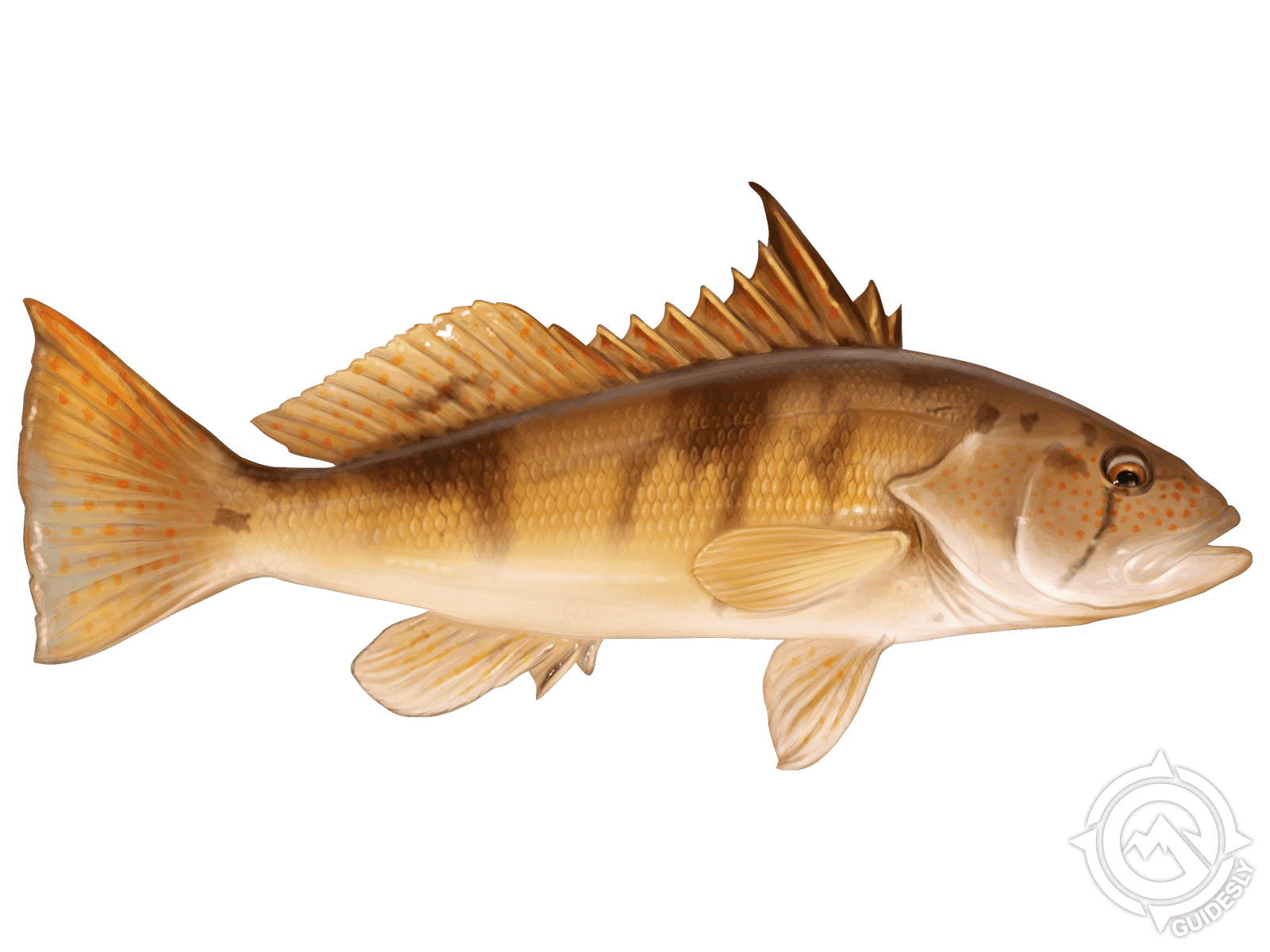Barred Sand Bass

Species Details
Paralabrax Nebulifer
Serranidae
Perciformes
Inshore, Nearshore
1 - 4 lbs.
7" - 10"
Barred Sand Bass (Paralabrax Nebulifer) Fish Description
The barred sand bass, more commonly known as sand bass, is a popular game fish in Southern California. They are a member of the Sea Bass or Serrinadae family.
The barred sand bass is normally long and elongated and has a squarish tale. Their colors range from dark gray to greenish-gray on their backs, with vertical bars on their sides and a whitish belly. Their heads are characterized by small golden-brown spots, a protruding lower jaw, and a large mouth. They are sometimes referred to as grumps or grumpy because of the way their mouths look. The rest of their bodies are covered in dark splotches and small rough scales.
Anglers can distinguish this fish from other sea basses such as the kelp bass by looking at their third dorsal spine. The dorsal fin of the barred sand bass has ten spines, and its third is the largest — at least two and a half times longer than the second spine.
Diet and Size
The foraging habits of this species seem to depend on their body size. Small barred sand bass prey on crustaceans and small invertebrates. Large barred sand bass prey on larger fish, particularly plain midshipman, and octopus. Barred sand bass of medium or intermediate size is found to eat the same as the small and large sand bass.
The barred sand bass typically grows to a length of 10 inches in a matter of five years. Some even take a shorter amount of time to mature and reach 7 inches in length. As of 2019, the world record for the barred sand bass is 26 inches in length and 13 pounds in weight. They can live up to 31 years of age.
Interesting Facts
- The barred sand bass, like the other species under the genus Paralabrax, can change sex. Some turn from female to male when they age, becoming bigger in the process.
- The populations of this popular fish species are considered stable, most likely benefiting from the marine protected areas along the coast of California where it is native and the banning of commercial fishing of its species.
- Among its relatives, it is most similar in appearance to the spotted sand bass because of its elongated third dorsal spine. One way to tell them apart is by looking at the spots on their bodies. The spotted sand bass has orange, black, and brown spots on their body.
Barred Sand Bass Fishing Techniques
The barred sand bass is easy to catch with both baits and lures as they will grab just about anything. They are seasonal, though, but when in season from May to October, they can be caught in schools. The best time to catch them is during sunset and onwards into the night, especially during the full moon.
Like most Southern California game fish, the best bait for the barred sand bass is live squid. Live anchovies, sardines, or smelt are good, too. Anglers can also use bloodworms or fresh mussels. Dead baits, particularly dead squid, also work well with the barred sand bass. The best lures for this fish are plastic lures. But to know which kinds are best will depend on the condition and temperature of the water.
Fishing for barred sand bass in the Southern Californian waters does not require comprehensive gears. Inshore anglers can catch them with a slightly stiff six and a half foot graphite-composite rod in the 12-30 pound range. A heavy freshwater bass rod in the 8-17 pound range will also work fine. And if you’re on a boat, a lighter rod will be a better choice.
While barred sand bass can sometimes be caught from shore, the best way to catch them is on a boat. The bigger ones are usually found in sandy bottom areas near rocks, around 60 to 100 feet of water.
When fishing for barred sand bass, anglers must learn the depth at which the fish are feeding and then cast their lure out in that general direction. They can try sinking the lures in various depths to figure this out, and once they do, they only need to wait for the fish to bite the bait.
Habitat and Distribution
The barred sand bass lives on sandy bottoms, in shallow waters up to 600 feet deep. They are usually found near kelp or around rocks. There are plentiful young ones in shallow waters.
They are usually caught in 60 to 100 feet of water during their spawning season when they leave their usual reefs. They spawn during warmer months and are pelagic spawners.
The barred sand bass is native to California and Baja California, on the Eastern coast of the Pacific Ocean. Its range is from Santa Cruz in Central California, up to Magdalena Bay in Baja California. They can also sometimes occur in Acapulco, Mexico.





